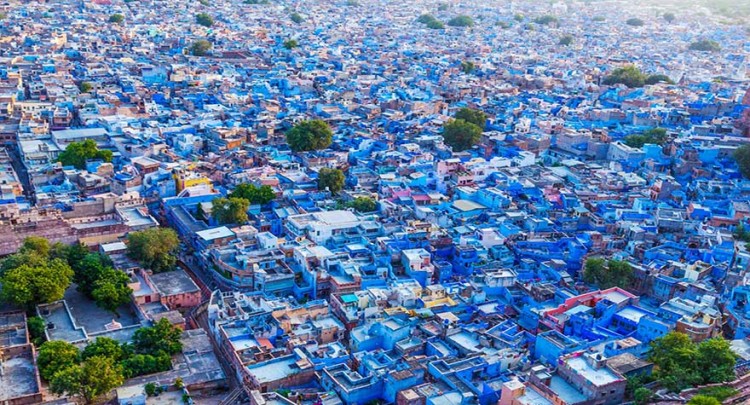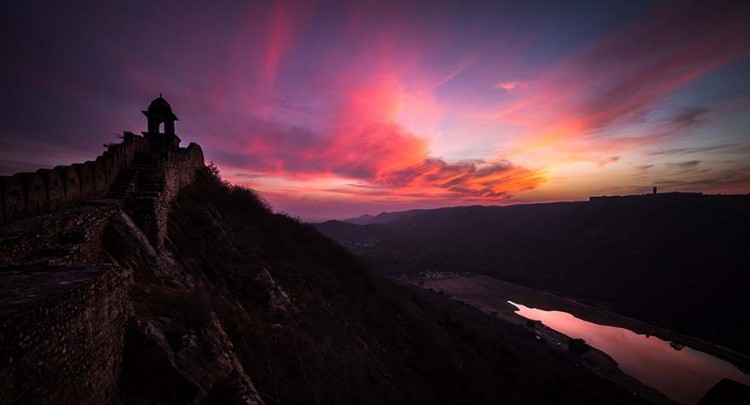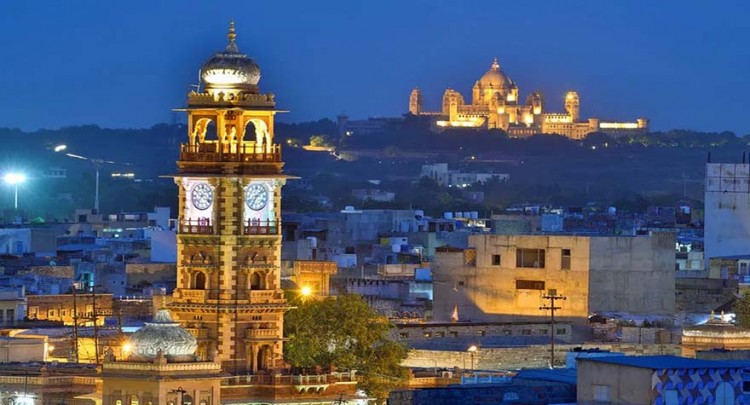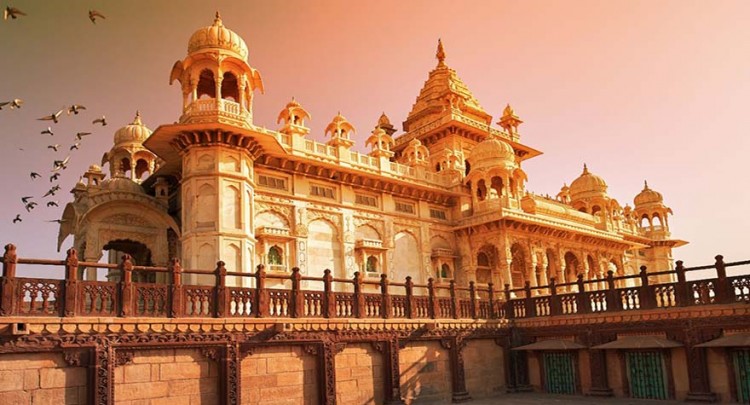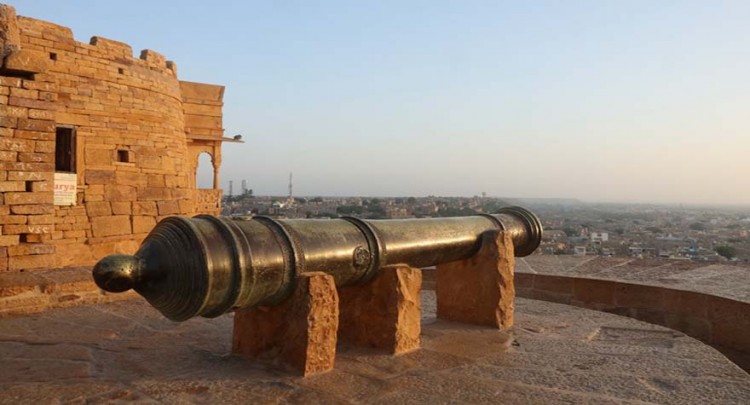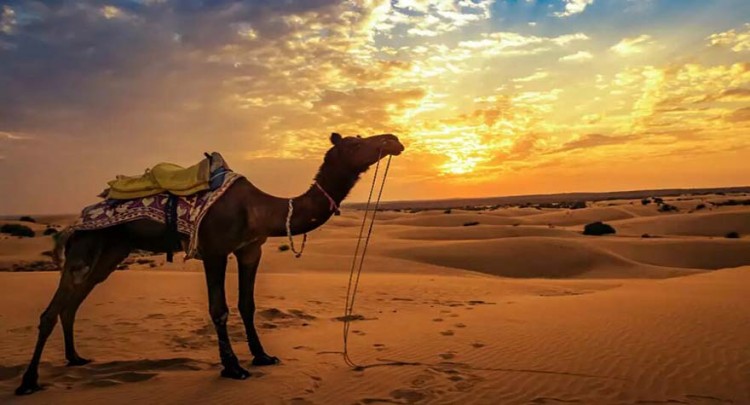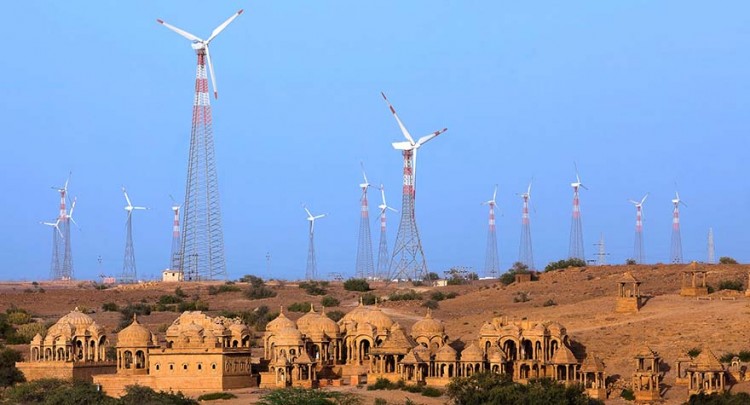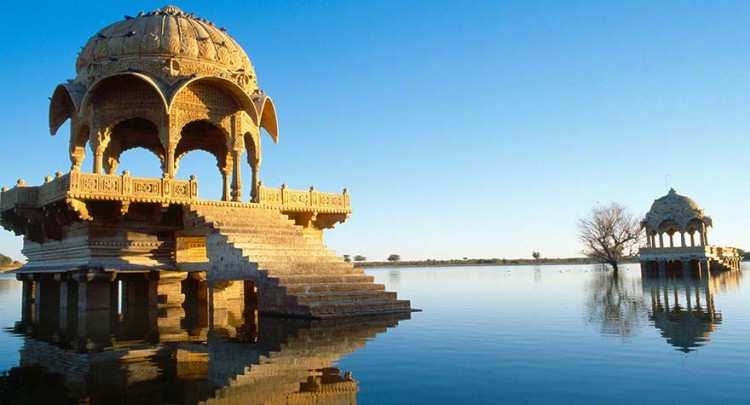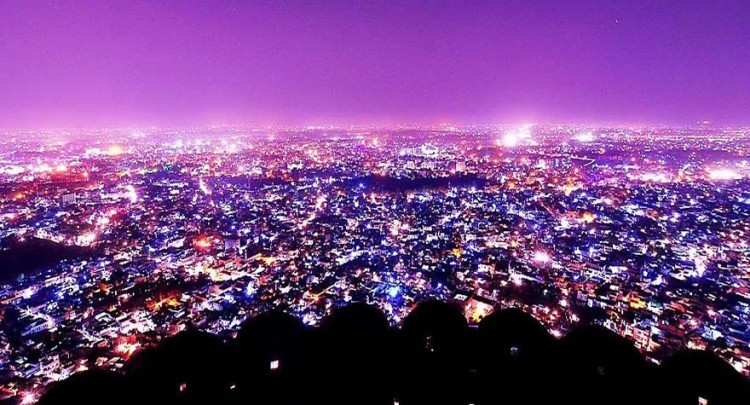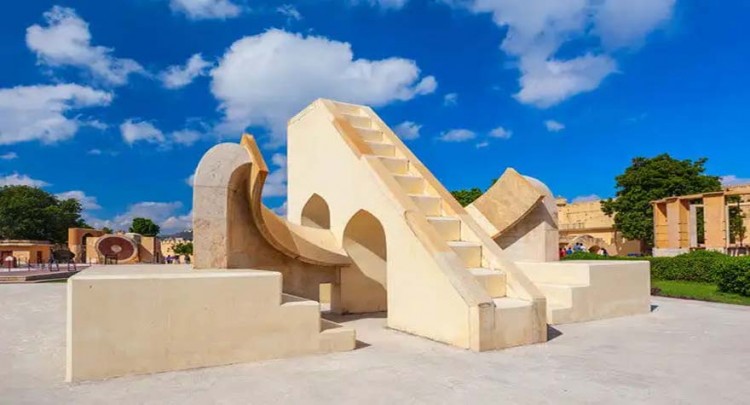About City
Rajasthan's beautiful Pink City Jaipur, was the stronghold of a clan of rulers whose three hill forts and series of palaces in the city are important attractions. Known as the Pink City because of the colour of the stone used exclusively in the walled city, Jaipur bazaars sell embroidered leather shoes, blue pottery, tie and dye scarves and other exotic wares. Western Rajasthan itself forms a convenient circuit, in the heart of the Thar desert which has shaped its history, lifestyles and architecture.
Founded in AD 1727 by Sawai Jaisingh II, Jaipur the capital of Rajasthan is popularly known as the Pink City with broad avenues and spacious gardens. The capital of Rajasthan, Jaipur is steeped in history and culture. Here the past comes alive in magnificent forts and palaces, blushed pink, where once lived the maharajas. The bustling bazaars of Jaipur, famous for Rajasthani jewellery, fabric and shoes, possess a timeless quality and are surely a treasure-trove for the shoppers. This fascinating city with its romantic charm takes you to an epoch of royalty and tradition.
The imperial city, replete with amazing legends of romance and heroism. A land where the past thrives still. This is the fortified city of Jodhpur, standing a wary sentinel to the great Thar Desert. Beckoning you to the wilderness of fascinating dunes, rocky terrain and thorny vegetation.
Once the capital city of the Marwar state, it was founded in 1459 by Rao Jodhaji - chief of the Rathore Clan of Rajputs who claimed descent from Lord Rama. A major trade centre of 16th century, the city, today, has grown to become the second largest city of Rajasthan, retaining the medieval splendour.
The city is encompassed by a high wall, 10 km. long with eight gates. Within the city, atop a rocky hill, stands the massive fort, 120 mtrs. above the plains.
Packed with history, art and culture, this princely state is a treasure trove of some exquisite palaces, forts, temples and havelis standing a testimony to the imperial grandeur. But what entices the most in Jodhpur is the traditional lifestyle, festivity and smiling people.
Altitude: 236.53 mtrs.
Best Season: July-March
Climate: Summer
Mean Max. 42.2 C
Mean Min. 36.6 'C
Winter Mean Max. 27.5 'C
Mean Min. 15.5 'C
Clothing: Summer light tropical or cotton Winter Woolen.
Season : October - March
What to see
1. Amer Fort / Amber Fort: Amber was founded by the Meenas in 967 AD and they dedicated the town to Amba, the Mother Goddess. Around 1037 AD, Amber was conquered by Kachhawa Rajputs and ruled from the 11th to the 18th century, until the capital was moved from Amer to Jaipur. The Amber Fort was built by Raja Man Singh in 1592 AD and it was further expanded by successive rulers. Man Singh was one of the trusted generals of Emperor Akbar and one among the Navaratnas of his court. Later in 1727 AD, Sawai Jai Singh II moved the capital from Amber to Jaipur.
The architecture of Amer Fort is influenced by both Hindu and Muslim styles. Among the famous tourist places in Jaipur, Amer Fort was built using red sandstone and overlooks Maota Lake which is the main water source to the Palace. The Palace is divided into four main sections each with separate entry gate and courtyard. Main entry is through the Suraj Pole (Sun Gate) which leads to Jaleb Chowk. This was the place where armies would hold victory parades with their war bounty on their return from battles. It faced east towards the rising sun, hence the name Sun Gate. An impressive stairway from Jaleb Chowk leads into the main palace grounds. Shila Devi Temple and Ganesh Pol are located here.
The second courtyard houses the Diwan-i-Am or the Public Audience Hall. Built with a double row of columns, the Diwan-i-Am is a raised platform with 27 colonnades, each of which is mounted with an elephant-shaped capital, with galleries above it. This was the place where the general public assembled to meet the King and address their grievances.
The third courtyard is where the private quarters of the Maharaja, his family and attendants were located. This courtyard is entered through the Ganesh Pol or Ganesh Gate, which is embellished with mosaics and sculptures. The courtyard has two buildings, one opposite to the other, separated by a garden laid in the fashion of the Mughal Gardens.
Sheesh Mahal or the Mirror Palace is one of the prime attractions of Amer Fort. The ceiling and the walls of Sheesh Mahal are engraved with innumerable pieces of mirrors with stunning floral paintings on them. When candles were lit in the room at night, the whole room appears like a sky filled with stars due to the reflection of the mirrors. The other building seen in the courtyard is the Sukh Mahal (Hall of Pleasure). The amazing huge doors of Sukh Mahal are made of ivory and sandalwood. There is a water channel running through the hall, which carried cool water that worked as an air cooler. Sukh Niwas was the place where the Kings used to spend time with their queens. South of this courtyard lies the Palace of Man Singh I, which is the oldest part of the fort.
The fourth courtyard is Zenana where the royal women lived. This courtyard has many living rooms where the queens used to reside. All the rooms open into a common corridor. Diwan-e-Khas or the Hall of Private Audience is also located in this courtyard. It has stunning mosaic work in glass on the walls. This hall was used by the king for the reception of important guests such as kings, ambassadors, and nobles in private.
2. Jaigarh Fort is situated near Amber Fort with common fortification. Both the forts are connected by a narrow underground passage which is meant as an escape route in times of war to enable the royal family members in the Amer Fort to shift to the more formidable Jaigarh Fort. This fort can be reached on elephants that are available near the Amber Fort. Watching the Light and Sound Show at the Amber Fort is also a great way to spend an evening in Jaipur. The main attraction of the fort is the historical cannon located in its premises named the Jaivana. The Jaivana was the largest cannon of the world which ran on wheels, and was once vital in the political conquests of the royals of Rajasthan. Four temples known as the Laxmi Vilas, Lalit Mandir, Vilas Mandir, and Aram Mandir are also a part of the premises. They also include luxurious stretches of gardens belonging to the royal members of the city. The Fort also houses a chamber of armoury called Shubhat Niwas.
Timings: 8 AM - 5.30 PM, Sound & Light Show: English (7.30 PM daily) & Hindi (8.30 PM daily)
3. City Palace / Sawai Man Singh II Museum: City Palace is a beautiful palace complex situated in the heart of Jaipur City. It is one of the popular palaces in Rajasthan, and among the famous places to visit as part of Jaipur tour.
The palace was built between 1729 and 1732 AD by Sawai Jai Singh II. He planned and built the outer walls and later additions were made by successive rulers till the end of the 20th century. City Palace was the seat of the Maharaja of Jaipur, the head of the Kachhwa Rajput clan. Part of the palace currently houses a museum, though the major part is still a royal residence. It one of the most famous Jaipur tourist places.
The City Palace reflects Rajput, Mughal, and European architectural styles although it was designed according to Vaastushastra. The Palace is laid in a grid pattern with wide avenues and is surrounded by large walls on all sides. It is a unique and remarkable complex of several palaces, pavilions, gardens, and temples. The most prominent structures in the complex are the Chandra Mahal, Mubarak Mahal, Maharani's Palace, Sri Govind Dev Temple, and the City Palace Museum. Virendra Pol, Udai Pol near Jaleb Chowk, and the Tripoli Gate are the entry gates to the City Palace.
Chandra Mahal is the most commanding building in the City Palace complex. It is a seven-storeyed building and each floor has been given a specific name such as the Sukh Niwas, Ranga Mahal, Pritam Niwas, Chhavi Niwas, Shri Niwas, and Mukut Mahal. It contains many unique paintings, mirror work on walls, and floral decorations. Sukh Niwas is painted in Wedgewood blue fully decorated with white lining. It has the drawing and dining room of the Maharaja which is fully ornamented with Mughal miniatures, silver and glass dining tables. Shobha Niwas is on the 4th floor of the Chandra Mahal. The Shobha Niwas is fully decorated with mirror walls with blue tiles ornamented with mica and gold leaf. Chhavi Niwas is on the 5th floor which has an elegant floor of blue.
At present, most of this palace is the residence of the descendants of the former rulers of Jaipur. Only the ground floor is allowed for visitors where the Maharaja Sawai Man Singh II Museum is located that displays carpets, manuscripts, and other items that belonged to the royal family. There is a beautiful peacock gate at the entry to the Mahal.
Mubarak Mahal was built with a fusion of the Islamic, Rajput, and European architectural styles in the late 19th century by Maharaja Madho Singh II as a reception center. The Diwan-i-Aam is an enchanting chamber, with the ceiling painted in rich red and gold color. This chamber, now functioning as an art gallery, has a variety of exhibits like textiles such as royal formal costumes, sanganeri block prints, embroidered shawls, Kashmiri pashminas, and silk saris as part of the Maharaja Sawai Man Singh II Museum.
Diwan-i-Khas was a private audience hall of the Maharajas, a marble-floored chamber. It is located between the armory and the art gallery. There are two huge sterling silver vessels of 1.6 m in height and each with a capacity of 4000 liters and weighing 340 kilograms on display here. They were made from 14000 melted silver coins. They are officially recorded by the Guinness Book of World Records as the world's largest sterling silver vessels.
Pritam Niwas Chowk is the inner courtyard, which provides access to the Chandra Mahal. Here, there are four small gates (known as Ridhi Sidhi Pol) that are adorned with themes representing the four seasons and Hindu gods. The gates at the Northeast is a Peacock Gate representing autumn and dedicated to Lord Vishnu; the Southwest gate is Lotus Gate representing summer season and dedicated to Shiva-Parvati; the Northwest gate is Green, also called the Leheriya gate, suggesting spring and dedicated to Lord Ganesha, and, the Rose Gate with repeated flower pattern is Southeast gate representing winter season and dedicated to Goddess Devi.
Maharani's Palace was originally the residence of the royal queens. It has been converted into a museum, where weapons used by the royalty during war campaigns are displayed, including those belonging to the 15th century. The ceiling of this chamber has unique frescoes, which are preserved using jewel dust of semiprecious stones. It also exhibits pistols, ivory handles, cannons, chain mail, and swords.
Govind Dev Ji Temple, dedicated to Lord Krishna is part of the City Palace Complex. It was built in the early 18th century. It has European chandeliers and paintings of Indian art. The ceiling in the temple is ornamented in gold. Its location provided a direct view to the Maharaja from his Chandra Mahal palace.
Timings: 9 AM to 5 PM
5. Jantar Mantar: This monument is the largest of the five astronomical observatories present in India. The other four astronomical observatories are located at Delhi, Varanasi, Mathura and Ujjain. It features the world's largest stone sundial, and is a UNESCO World Heritage site.
The Jantar Mantar was built by the Rajput king Sawai Jai Singh II and completed in 1738 AD. The name is derived from jantar means yantra and mantar means calculation. The Jaipur observatory was functional for seven years only, as the Maharaja was not very successful in deriving accurate, astronomical observations. It was later restored in the year 1901 and was declared as a national monument in the year 1948.
The monument features masonry, stone and brass instruments that were built using astronomy and instrument design principles of ancient Hindu Sanskrit texts. The instruments allow the observation of astronomical positions with the naked eye. It features the world's largest stone sundial Samrat Yantra. Jantar Mantar also includes about 15 astronomical instruments of various geometrical shapes and sizes. These instruments are used for measuring time, accurately determining the celestial altitude and predicting the occurrence of eclipses.
The Samrat Yantra, Jaiprakash Yantra and Hindu Chhatri are the popular structures within the Jantar Mantar. The big sundial or the Samrat Yantra is one of the major attractions of the observatory. This can show the time with an accuracy of only two-second difference from the local time of Jaipur. Samrat Yantra is 27.4 m in height and used to forecast the commencement of monsoon on Guru Purnima, even today. Rashivalayas Yantra, Dakshina Yantra, Disha Yantra, Unnathamsa Yantra, Raj Yantra, Narivalya Yantra and the Dhruv Yantra are the other structures in Jantar Mantar.
Timings: 9:30 AM to 4:30 PM
6. Hawa Mahal: The palace sits on the edge of the City Palace and extends to the Zenana (women's) chambers. The renowned Hawa Mahal or the Palace of Winds was constructed in 1799 by Maharaja Sawai Pratap Singh as a continuation to the stunning City Palace. The main architect of this palace is Lal Chand Ustad and the palace is believed to have been constructed in the form of the crown of Krishna, the Hindu God.
Hawa Mahal was built in Rajputana architectural style. The palace is constructed of beautiful red and pink sandstone and it looks like a five storeyed Pyramid. The palace stands on a podium which is fifty feet high from base. Its unique five-storey exterior has 953 small windows called jharokhas decorated with intricate latticework. The original intention of the lattice was to allow royal ladies to observe everyday life in the street below without being seen. Through these windows, cool air enters in the palace and makes the inner environment cool and pleasant.
The entrance of the palace is a door which opens up to a special courtyard which is surrounded by several two-storey building. Of the five storeys of the Mahal, the top three storeys have the thickness of a single room while the bottom storeys have courtyards. The interior of the palace is very elegant. The upper floors of the palace can be reached by climbing the narrow ramps. There are no stairs inside the Hawa Mahal.
The palace is now maintained by the Archaeological Department. There is a small museum located in the premises of Hawa Mahal that houses ancient artifacts related to the Rajput lifestyle. From Hawa Mahal, one can get an excellent view of Jaipur City.
Timings: 9 AM to 4.30 PM.
7. Albert Hall Museum: A very old and prestigious museum of Jaipur, the Albert hall Museum is a wonderful place to visit. It is named in honour of King Albert Edward VII of England due to the fact that it was he who had inaugurated it. It lies beyond the original walled city. Built by Sir Samuel Swinton Jacob it was inaugurated sometime in the late 19th century.
Jaipur’s amazing cultural heritage finds a home in this museum. The most impressive objects on display are the artefacts and oil paintings, water colour portraits and landscapes along with several articles made of ivory and stone, along with mesmerizing crystal artistry and metal sculptures.
It is a fine example of Indo-European architecture. The design of the museum is quite similar to the Victoria and Albert Museum in London. The museum building includes many archways, towers, and courtyards. With its beautifully elaborate domes and carved arches constructed from inlaid sandstone, Albert Hall is an impressive structure, and among the must-visit places during your Jaipur trip. The corridors were decorated with several murals including the Ramayana, reproducing paintings from illustrations in the Persian Razmnama prepared for Emperor Akbar.
This museum houses 19,000 historic objects and has various collections like metalware, ivory work, lacquer work, jewellery, textiles, pottery carved wooden objects, arms and weapons, clay models, sculptures, educational, scientific, and zoological objects, tribal costumes, ceramics, oil, and miniature paintings, inlay work, musical instruments, clocks, and marble statues. The museum also has an array of rare articles on its display including textiles, carpets, flora and fauna of the state, toys, dolls, and even an Egyptian mummy that belongs to the Ptolemaic Epoch. This museum stores the most famous Persian Golden Carpet which was purchased by Raja Jai Singh from Persian King Shah Abbas.
The complex also houses a zoo, a greenhouse, an aviary, and a sports ground, besides the museum.
Timings: 9 AM - 5 PM, Closed on Friday
8. Jal Mahal: Jal Mahal or the Water Palace is a palace located in the middle of the Man Sagar Lake in Jaipur. This is one of the biggest artificial lakes in Jaipur. The lake used to be a bird watcher's paradise in the past and was a favorite ground for the Rajput kings of Jaipur for royal duck shooting parties during picnics.
Jal Mahal was built in 18th century by Sawai Madho Singh I. Jal Mahal was constructed for serving the purpose of a summer resort for his family and guests. The palace was renovated and expanded in the 18th century by Madho Singh II. The Jal Mahal palace is considered an architectural beauty built in the Rajput and Mughal styles of architecture. It provides a picturesque view of the lake from the Man Sagar Dam and the surrounding Nahargarh hills. The palace was built using red sandstone. It is a five storied building out of which four floors remain under water when the lake is full and the top floor is exposed. The rectangular Chhatri on the roof is built in Bengali style. The chhatris on the four corners are octagonal. Inside, a staircase connects the lower floors to Chameli Bagh, an aromatic terrace garden on top of the palace which provides a panoramic view of the Aravalli Hills.
The palace has suffered subsidence in the past and also damage due to water logging, which have been repaired under the restoration project undertaken by the Government of Rajasthan. The intricately redecorated interiors of the palace, featuring floral designs are quite attractive. The palace looks mesmerizing in the evenings when the entire structure is immersed in flood lights. A number of migratory birds can also be seen around the Jal Mahal during winters.
The Palace has been turned into hotel now and it is closed for general public. The palace can only be reached by a boat.
Timings: 9 AM to 5 PM
9. Srijagat Siromani Temple: This temple is dedicated to Meera Bai and Lord Krishna.
Meera Bai is the wife of Mewar king though in childhood she was a great devotee of Lord Krishna and considered him as her husband. This temple was built during1599 - 1608 AD by the queen Kanakwati, wife of king Man Singh I in the memory of her son Jagat Singh.
According to the history, the statue of Lord Krishna in this temple is same statue that Meera Bai used to worship in Mewar. This statue was saved from destruction by rulers of Amer during Mughal war with Mewar and brought safely to Amer.
The temple is a perfect example of Nagara style architecture. It consists of a Sanctum, Vestibule and Mandapa with projecting screen window on either side. The temple stands on a high ornate adhisthana. The three storeyed Garbha griha is crowned by Sikhara. The Mandapa is a two storied structure. An attractive mural in the ceiling of assembly hall represents the 17th Century art of Amber. The outer walls of Jagat Siromani temple are adorned with the sculptures of different gods and goddess.
At the entrance of the temple there is beautiful marble archway which is flanked by carvings of elephants. The archway was made from single piece of marble and it contains intricately carved images of various gods. This temple also has a white marble statue of Lord Vishnu.
Timings: 6 AM - 1 PM and 4 PM - 8 PM.
10. Khole Ke Hanuman ji Temple: Khole Ke Hanuman ji Temple is dedicated to the Lord Hanuman. The inner sanctum of the temple is quite large and can accommodate 500 devotees. The temple is situated on a hillock and devotees have to walk around 1 km to reach the temple. The temple has an attractive entrance archway. The temple is known for its magical power and it is believed that the wishes of the devotees are always fulfilled. It is one of the popular Jaipur places to visit, especially for religious people.
The natural view of Aravali hill is magnificent from the temple and surrounding places. A large number of tourists visit this place to witness sunset and sunrise from this place. There is also a separate temple for Lord Ganesh and Lord Shiva.
11. Birla Mandir: Birla Mandir is a Hindu temple located at the base of Moti Dongri Hill in Jaipur. The temple is sometimes also referred to as the Laxmi Narayan Temple. The Temple is dedicated to Lord Vishnu (Narayan) and his consort Lakshmi. The images of Lakshmi and Narayan attract the attention, being made out from one piece of marble. Standing on a raised platform, Birla Temple is made out with the premium quality of white marble. The temple looks stunning, when it is brightly lit in the night. The three huge domes of the temple represent three different approaches to the religion. The temple has lavish green gardens all around.
Stained glass windows depict the scenes from Hindu scriptures. The temple also houses numerous deities, with an exquisite image of Lord Ganesh. Delicate carvings of Hindu symbols, and ancient quotes from the Geeta ornament the walls of this fascinating temple. One can also recognize the mythological events engraved on the walls. Apart from the religious idols, pictures and figures of several religious saints, philosophers and historical achievers, like Socrates, Buddha, Zarathustra and Confucius, are also included in the temple.
The Birla Temple attracts large number of visitors during the festival of Janmashtami, which is celebrated to mark the birth of Lord Krishna. The complete temple premises are decorated beautifully with flowers during the festivals. The temple complex consists of a museum, where ancestral valuables of the Birla's are displayed.
Museum Timings: 8 AM - 12 PM and 4 PM - 8 PM.
Temple Timings: 6 AM - 12 PM and 3 PM - 8:30 PM.
12. Nahargarh Fort: Situated on the top of the Aravalli hills, The Nahargarh Fort offers a magnificent view of the entire spread of the city of Jaipur. It used to be a defence fort and was built by Maharaja SawaiJai Singh II. It served for the purpose of fortification of the city when it used to be under attack. The fort was also used to shelter and house the British inhabitants and the royal natives during the Sipahi Mutiny of 1857.
During the reign of Sawai Ram Singh in the later decades, the fort was heavily renovated and several rooms were added. The royal suites and rooms of the fort are interconnected through secured passages that are decorated intricately. One of The remarkable additions,MadhavendraBhavan, went on to become the royal residence of the queens of Jaipur, along with the topmost storey being a luxurious suite for the King.
13. Chand Baoli Step Well: The Abhaneri Step Well is an exclusive tourism venue of Jaipur, situated in Abha Nagri. It features the exceptional invention of collecting and preserving rain water for drinking and fodder during the unfavourable conditions of drought. The most famous among the step wells, as well as the largest and deepest, is the Chand Baori. The walls and steps of the well are exotically adorned with engravings and sculptures. The wells also acted as the reservoirs of drinking water along with separate enclosures for providing bathing facilities to the visitors of the Harsh Mata Temple, which is situated in the frontal premises of the Chand Baori. The temple is regarded as the abode of the Harsh Mata- The regional Goddess of Happiness and Joy. The main characteristic feature of the Abhaneri Baori Step Well is the distribution of the steps into three categories, and each flight of steps being divided and arranged into stories.
This place is a 2 hour drive from Jaipur (around 95km).
14. Gaitore: Gaitore is a famous historical venue of Jaipur. Raised as symbols for cremation grounds of the royal Rajput Emperors and the family members of the king’s clan, The Gaitoreis an example of the fusion of Mughal and Hindu architecture. Marble and red and yellow sandstone structures, bearing the inscriptions of the traditional carvings of Rajasthan adorn this place.
The famous marble memorials of Maharaja Sawai Ram Singh II, Sawai Madho Singh and Sawai Jai Singh II, pay homage to the valour, courage and philosophy of these rulers. Beautiful patterns and engravings enhance the beauty of these structures. There are also several paintings on the walls which are an amazing insight into the traditions and customs of Rajasthan.
The cenotaph of Maharaja Sawai Jai Singh II is regarded as the one that is most intricately decorated and is hence the one that should not be missed. The cenotaph of Maharaja Sawai Jai Singh II is the most magnificent and royally designed owing to the exceptional patterns of inscriptions and engravings upon the marble platform.
15. Kanak Vrindavan: Kanak ghati in Jaipur is a beautiful spread of lush green park that offers a relaxed ambience away from the din of the city. Established by Maharaja Sawai Jai Singh, this beautiful piece of nature finds its place at the bottom of Nahargarh slopes while you are going towards the Amber fort. Since the place looks quite similar to Lord Krishna’s abode in Vrindavan, its name has been kept after it. Inside, there are stunning fountains and marble statues that add to the beauty of this park. Do visit this garden to see a perfect blend of nature, religion and culture.
Excursions
Jaipur Zoo, Chokhi Dhani, Moti Dungri Ganesh Temple, The Galta Monkey Temple, Sargasuli Tower, Alice Garg National Seashell Museum, Jawahar Kala Kendra, Sisodia Rani ka Bagh, Ram Niwas Garden, Shila Devi Temple, Sanganer 16 kms, Ramgarh Lake 30 kms, and Shekhawati 168 kms

